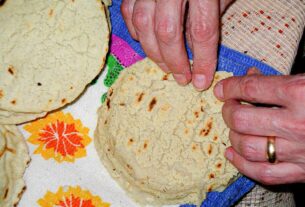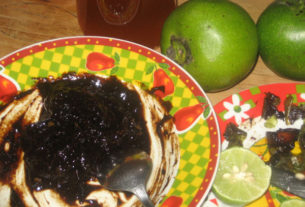While data on early Mesoamerican cultures has been deduced primarily from archaeological evidence, historians have utilized the written records of later cultures to produce the final chapters of pre-hispanic Mexico. Having reached a cultural plateau, no significant intellectual or scientific growth was noted among societies of the Post-Classic period. Their tendency instead was to put acquired knowledge into practice.
The era is marked by the shifting of political power from the priesthood to the warrior elite. In parallel, the practice of human sacrifices came to a crescendo to appease increasingly blood-thirsty gods. In addition, with the rise of these militaristic societies the object of armed conflict became more a matter of dominating subject states for the purpose of exacting tribute rather than for territorial gain.
Toltecs
Teotihuacan had long served as a buffer between civilized central Mexico and the Chichimecas, barbaric nomads inhabiting arid lands to the north.
After the disappearance of the Maya, the Toltecs swept into the central valley, establishing their capital at Culhuacan under the leadership of Mixcoatl. His son and heir was the legendary Ce Acatl Topiltzin, meaning One Reed (the year of his birth) Our Prince. A high priest of the cult of Quetzalcoatl, Topiltzin became the Toltec’s leader after killing his uncle, Mixcoatl’s assassin. An enlightened ruler, he is attributed with founding Tula, a splendid new capital city where he promoted peace and prosperity.
Topiltzin’s reverence for the Plumed Serpent, whose name he adopted, and his abhorrence of human sacrifice, roused the ire of devotees of the fearsome Tezcatlipoca (Smoking Mirror), ancestral supreme deity of the Toltecs. Through intrigue and trickery, the dissidents finally prevailed, forcing Topiltzin-Quetzalcoatl into exile. With a troop of followers he set off for the holy city of Cholula and later sailed off into the Gulf of Mexico, emerging in the Yucatan where, under the Mayan moniker Kukulcan, he invaded Chichen Itza. Meanwhile, he sent word back to Tula to expect his return from the east in one of cyclically recurring Ce Acatl years. This prophecy is strongly linked to the Aztec’s swift capitulation to the Spaniards some 500 years later.
In Tula, Toltec society grew increasingly militaristic. The knightly orders of jaguar and eagle warriors and the practice of massive human sacrifices are likely to have begun there. The heavily fortified city took on a somber air as war and death became the dominant themes in stone work. Curiously, Tula’s idiosyncratic warrior statues, the great Atlantes, are apparently representations not of Tezcatlipoca, but of Tlahuizcalpantecuhtli, the Plumed Serpent in his guise as Morning Star.
The influence of the Toltecs was widespread. Artifacts bearing traits of the culture have appeared throughout much of Mexico and even in far off sites in the U.S. southwest and southeast. The Toltecs mysteriously disappeared in the 11th Ccentury.
Tula was violently laid to waste in the 12th century, probably at the hand of a people called the Chichimecas, believed to have arrived about a century after the Toltecs’ disappearance. Their civilization was far inferior to that of the Toltecs and the 18th century Mexican historian Mariano Veyta describes them as “burrowing in caves or, at best, in cabins of straw.”


